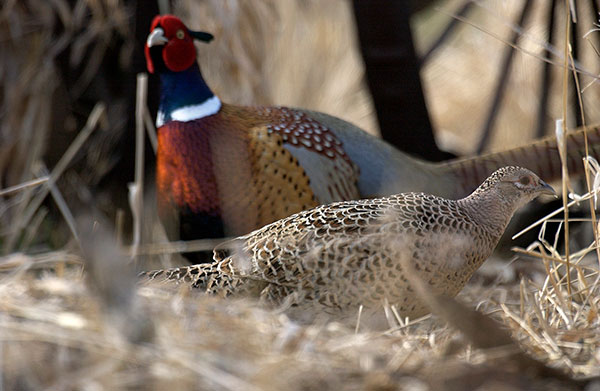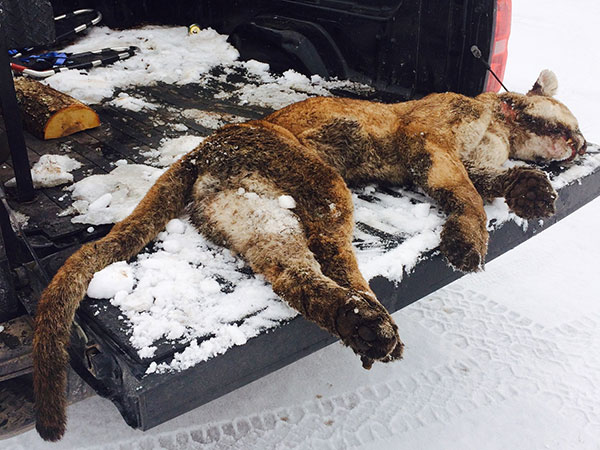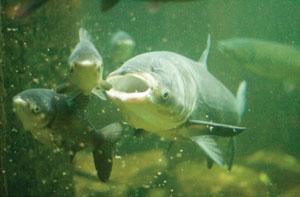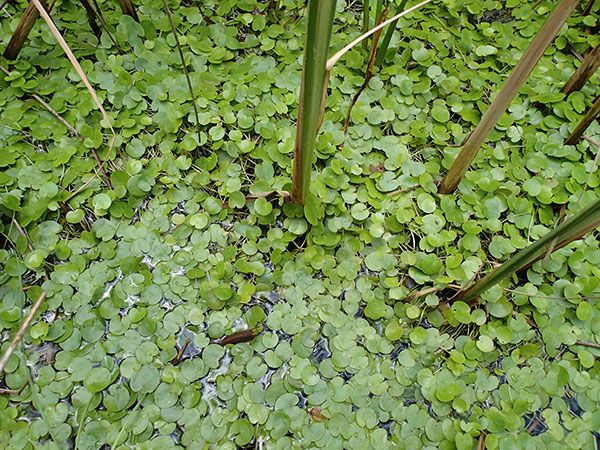- Details
(Provided by MDNR)
 Agreement Provides $550,000 for Pheasant Habitat in SW Michigan
Agreement Provides $550,000 for Pheasant Habitat in SW Michigan
The Michigan DNR is partnering with Enbridge Energy Partners, L.P. and Pheasants Forever in an agreement that will see Enbridge provide half a million dollars for pheasant habitat restoration in Michigan.
Improvement projects are scheduled to take place over the next three years in various areas in Michigan, focused on Michigan Pheasant Restoration Initiative priority landscapes and oak savanna restoration.
"This partnership allows the parties involved to work together cooperatively, producing significant habitat improvements for wildlife and the betterment of upland game hunting opportunities," said DNR Director Keith Creagh.
In 2013, Enbridge replaced a 30-inch pipeline, which runs for about two miles across the Crane Pond State Game Area in Cass County. As a result of the permitting process, the DNR and Enbridge worked together to improve the pipeline infrastructure and restore and improve habitat impacted during construction.
Enbridge transports, generates and distributes energy, employing more than 11,000 workers, mostly in the U.S. and Canada.
- Details
(Provided by MDNR)
 85% of Michigan’s Early Season Elk Hunters SuccessfulThe Michigan DNR announced that Michigan's first elk hunt of 2016, which ended Oct. 3, had a hunter success rate of 85 percent. One hundred state hunters had 12 days to fill their elk license, with 30 any-elk and 70 antlerless-only licenses issued.
85% of Michigan’s Early Season Elk Hunters SuccessfulThe Michigan DNR announced that Michigan's first elk hunt of 2016, which ended Oct. 3, had a hunter success rate of 85 percent. One hundred state hunters had 12 days to fill their elk license, with 30 any-elk and 70 antlerless-only licenses issued.
"It's hard to believe the first hunt period is in the books," said DNR wildlife biologist Jennifer Kleitch. "Overall, we had good weather to hunt, no notable law issues and good success. The last few days were the wettest, which slowed efforts just a bit."
The first hunt period of the elk season is staggered and open for a total of 12 days, from Aug. 30-Sept. 2, Sept. 16-19 and Sept. 30-Oct. 3. This early hunt period is open only in areas outside the core elk range, helping to control the distribution or locations of elk. The management goal for elk hunting is to control the number of elk and their locations and also the herd composition, or the male-to-female ratios. Hunt period 1 targets elk outside the location where the DNR wants the majority of the population to be.
- Details
(Provided by MDNR)
 DNA Test Cougars Killed in the Upper Peninsula
DNA Test Cougars Killed in the Upper Peninsula
Genetic testing on tissue samples from two cougars poached in the Upper Peninsula shows the two animals likely came from a population found generally in South Dakota, Wyoming and northwest Nebraska.
"This genetic research lines up with what we've presumed previously, that cougars found in the Upper Peninsula are males dispersing from this population east of the Rocky Mountains," said Kevin Swanson, a Michigan Department of Natural Resources wildlife management specialist with the agency's Bear and Wolf Program. "These males dispersed from the main population are looking to establish new territories."
Since 2008, the DNR has confirmed 35 cougar reports in the Upper Peninsula, but so far there remains no conclusive evidence of a breeding population. No reports have been confirmed from Lower Michigan.
Cougars are an endangered species in Michigan protected by law.
The U.P. cougar confirmations were derived from trail camera video, photographs, tracks, scat or in the case of the two males poached, carcasses.
- Details
(Provided by MDNR)
 No Bighead or Silver Carp Detected In Michigan's WatersThe Michigan DNR announced that so far in 2016, no bighead and silver carp environmental DNA (eDNA) has been found in Michigan waters.
No Bighead or Silver Carp Detected In Michigan's WatersThe Michigan DNR announced that so far in 2016, no bighead and silver carp environmental DNA (eDNA) has been found in Michigan waters.
The eDNA surveillance program ñ a collaborative effort between the Great Lakes states and the U.S. Fish and Wildlife Service (USFWS) - samples high priority locations for the presence of bighead and silver carp genetic material.
Since 2013, the DNR has partnered with the USFWS to implement a portion of the eDNA surveillance program in major tributaries to all the Great Lakes except Lake Superior, because it has been deemed very low-risk for introduction. This year, more than 2,445 samples will be collected, bringing the total from the last three years to approximately 7,200 water samples collected and analyzed. The majority of samples are taken from Lake Michigan tributaries such as the St. Joseph, Kalamazoo, Grand and Muskegon rivers.
Of the 2016 samples collected and analyzed, The DNR is still waiting for results from the third and final round of sampling in the St. Joseph, Grand, Kalamazoo, Muskegon, Macatawa, Galien and Black rivers. The final results are expected soon, but all other samples analyzed have come back negative at this point.
ìAlong with our participation in the eDNA surveillance program, we continue to be diligent with early detection efforts, such as conducting fish population surveys, increasing awareness among anglers, and maintaining an invasive carps reporting website for anglers to share any suspicious catches or observations that occur during their outings,î said Seth Herbst, the Fisheries Divisionís aquatic invasive species coordinator.
During the course of these sampling efforts, a single eDNA sample tested positive for silver carp genetic material in the Kalamazoo River in 2014. Based on further testing and work on the river, it was unlikely that the single detection out of 1,850 samples in 2014 was associated with a live fish.
ìA more likely explanation for that positive sample was a contamination source, such as visiting boaters or anglers from an area where silver carp is already established,î said Nick Popoff, manager of the DNRís Aquatic Species and Regulatory Affairs.
Results from eDNA testing conducted by the USFWS and its partner agencies throughout the Great Lakes basin can be viewed at: https://www.fws.gov/midwest/fisheries/eDNA.html.
For more information on invasive carp, visit Michigan.gov/invasives.
- Details
(Provided by MDNR)
 European Frogbit Detected in West Michigan Lakes
European Frogbit Detected in West Michigan Lakes
The Michigan DNR has confirmed the presence of European frogbit, a prohibited aquatic invasive plant, in Reeds and Fisk lakes in the city of East Grand Rapids.
European frogbit was first verified in Michigan in 1996 along the Great Lakes waterways in southeastern Michigan and has since been found in areas along Lake Huron and the eastern Upper Peninsula. The detections on Reeds and Fisk lakes represent the westernmost known locations of this invasive plant in Michigan and the Midwest. ††
Staff from PLM Lake and Land Management Corporation initially identified the plant during a routine lake inspection and reported the finding through the Midwest Invasive Species Information Network (MISIN), triggering a notification to the DNR and the Department of Environmental Qualityís Aquatic Invasive Response Team. The team currently is assessing the risk level of the situation and working with partners in the community, including the city of East Grand Rapids, Kent Conservation District and the West Michigan Cooperative Invasive Species Management Area, to develop an action plan.
What is European frogbit?


